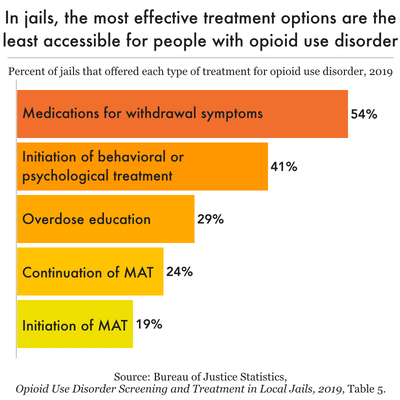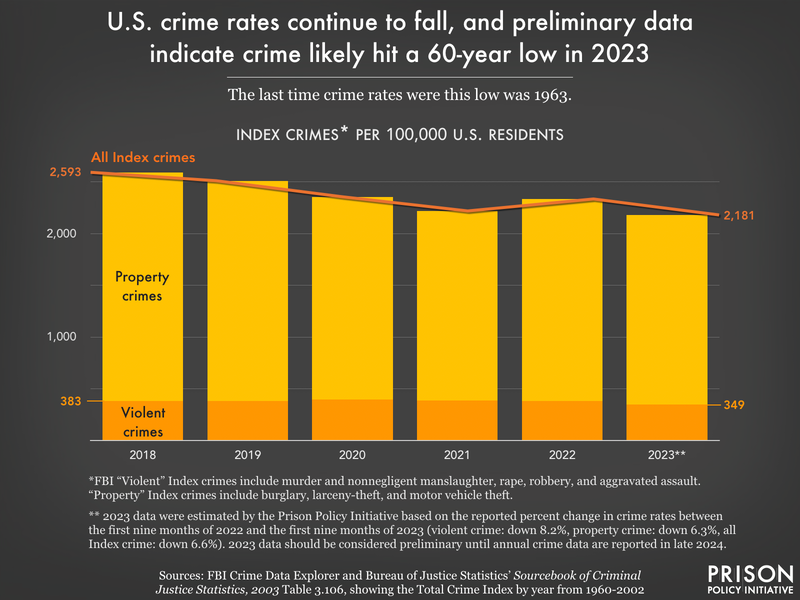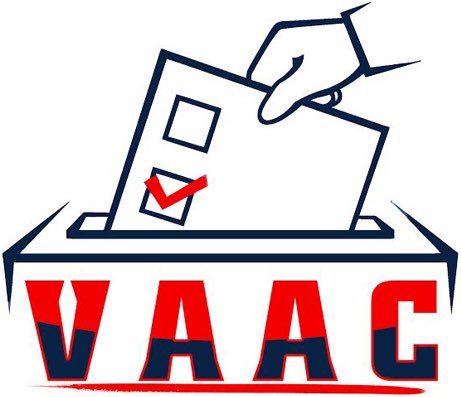This article was originally published by Prison Policy Initiative as “Candidates for office use jail and prison as “one size fits all” policy solutions. Here’s how to push back,” authored by Wanda Bertram.
Whether on the presidential debate stage or in races for governor, state legislatures, or city councils, candidates for elected office are falling back on an old tactic: Making spurious claims that “crime is up” and pitching more jail and prison time as solutions to social problems. Not only are claims of higher crime demonstrably untrue; incarceration is never the simple fix that it appears to be. Jails and prisons — even when they are rebuilt and branded as “humane” — are still places of punishment, and investing in them consistently fails to produce safer communities or, obviously, to dismantle mass incarceration.
The arguments for more jail can seem endless. But if candidates campaigning for office in your community or state push the narrative that more incarceration is a good idea — or even a necessary evil — we’ve got you covered. Below, we lay out facts you can use to oppose bogus claims about what criminalization can achieve, whether in regard to homelessness, the fentanyl crisis, or public safety in general.
FACT 1: Jailing people who use drugs is counterproductive.
Amid an overdose crisis, many lawmakers and candidates for elected office are campaigning on arresting more people for drug use, especially in public spaces. These reforms are a blatant repackaging of policies from the “war on drugs,” and a step backward for public health.

Importantly, although they push for police interventions as a means of getting drug users into treatment, public officials often ignore that there may not be enough substance use treatment resources in the community to begin with. Oregon, which re-criminalized drug possession earlier this year, only has 50% of the treatment resources that the state needs. Once in jail, people who have been engaging in harmful drug use are not likely to get treatment, much less genuine care. In a briefing earlier this year, we showed that less than one-fifth of all county jails in the U.S. initiate medication-assisted treatment for substance use disorder, and scarcely half of all county jails even provide medication for withdrawal.
What’s more, being in jail can make substance use dangerous or even fatal. Data from 2018 show that drug- and alcohol-related deaths in jails have increased nearly fourfold since 2000, and the median time spent in jail before an intoxication death is just one day. While arresting people who use drugs publicly may help move some of them into treatment, for others, it makes their addiction more deadly — not a sensible public health policy.
FACT 2: More housing, not criminalization, is the answer to the homelessness crisis.
Many local and state leaders are beginning to harshly enforce their anti-camping laws in the wake of the Supreme Court case Grants Pass v. Johnson, which held that states have the right to sweep homeless encampments even when shelter beds aren’t readily available. But contrary to what many of these lawmakers say, punitive responses to the homelessness crisis are not “common sense.”
A lot of unhoused people are already carrying criminal convictions, which can make it prohibitively hard to find a place to live. We’ve discussed before how public housing authorities have — and use — wide discretion to deny housing to people with records or even just histories of arrest. For these individuals, homelessness may be the result of past encounters with police. For others, a brush with law enforcement or a stint in jail could make finding future housing less likely. In our 2018 report Nowhere to Go, we found that people who had been to prison were more likely to be homeless depending on how many times they had been incarcerated — each lockup increasing the likelihood of ending up on the street without housing prospects.
As others have pointed out, rising rates of homelessness across the U.S. are the result of a genuine housing crisis. Formerly incarcerated people and those at risk of incarceration are particularly in need. But there are policy responses that work. In a 2023 briefing, we found that long-term supportive housing programs that aren’t conditional on people being sober or accepting treatment have incredible rates of success at keeping people housed and out of jail.
FACT 3: The solution to overcrowded, inhumane jails is pretrial reform and community healthcare.
In counties and cities where jails are crowded or facing a long list of maintenance and repair costs, local officials up for election this fall will likely be pressed to vote on whether to build new, often bigger jails. (And in some counties, jail construction measures themselves are on the ballot.)
Elected officials at the county and city level often claim they “have no choice” but to expand or replace their jails (for instance, recently, in Cleveland and Sacramento). But these hugely expensive projects often fail to produce the results local governments want. In counties with overcrowded jails, building a bigger jail is supposed to make the incarcerated population easier to supervise and care for. But all too often, these projects lead to more incarceration — and the new jail becomes overcrowded as well.
In fact, counties do have a choice in how they deal with issues in their jails. Local courts and county sheriffs can work together to reduce the jail population through pretrial reform, something that we have shown can be achieved at no detriment to public safety. And in the many, many counties where the majority of people in jail have a substance use disorder, expanding community healthcare options is a lower-cost — and more effective — way to tackle addiction that also reduces the number of people behind bars.
FACT 4: “Truth in Sentencing” reforms turn prisons into overcrowded nursing homes with little to no public safety benefit.
Earlier this year, Louisiana’s “tough on crime” governor, Jeff Landry, and its legislature pushed through “Truth in Sentencing” laws that eliminated parole in the state’s prisons and barred people from earning time off their sentences. His regressive reforms are part of a recent wave of legislation, mainly in the South. However, bills similar to Landry’s have come to states like Colorado and Iowa as well.
Calling for more people to spend decades and likely die in prison is a popular campaign strategy. But the reality of Truth in Sentencing is brutal and counterproductive. The U.S. prison system is already becoming geriatric as people sentenced in the ’70s, ’80s, and ’90s get older. Eliminating parole and other mechanisms for early release (like good time, which Landry dismissively called “a participation trophy for jail”) will accelerate that trend. It will also swell prison populations, as in Louisiana, where the Crime and Justice Institute projects that the regressive reforms will double the state prison population. And as a consequence both of overcrowding and of the “greying” of prisons, more people in prison will get sick, leading to the type of ghastly medical situations that prisons are known for.
Given these massive drawbacks, it may be surprising that forcing people to serve more time in prison does not, in fact, improve public safety. If candidates for state legislator or governor propose these “tough” reforms in your state, remind them that “Truth in Sentencing” reduces incentives for incarcerated people to complete programming that can help them and their communities. And the Vera Institute’s research on the ineffectiveness of longer prison sentences may be helpful to have on hand, too.
FACT 5: Crime is down, not up.
Crime is not surging — even though candidates for elected office, including Donald Trump and others from both major parties up and down the ballot, pretend otherwise. Claims of crime hikes can be very persuasive: In October 2023, 77% of surveyed Americans believed there was more crime in the U.S. than there was the year before. But as both old and new data show, this is simply not true. New data from the Bureau of Justice Statistics on criminal victimization in 2023 shows that crimes of almost all types were down from 2022, and many types of violent crime were equal to or lower than their reported rates in 2019.
To be sure, crime can fluctuate rapidly in short periods of time. But elected officials spend several years in office, and should be campaigning on their ability to protect public safety in the long term. So what do the long-term crime data say? In short, in 2023, crime hit a 60-year low. Candidates for office shouldn’t be centering their campaigns around increases in crime that, in this long view, are momentary and quite modest.

Ending misinformation about crime and safety goes beyond ending bogus claims about crime, too. Lawmakers should take a broad view of public safety by addressing real, harmful trends, like the housing shortage, economic inequality, and public health concerns. The people we elect to govern our communities have a wealth of information about the diverse drivers of crime and safety — and they should use it.
Conclusion
Lawmakers pushing for Truth in Sentencing, bigger jails, and other policies that expand the criminal legal system tend to claim that there is no alternative to these methods for making communities safer. But the alternatives that have been shown to work — housing first, harm reduction, expanded parole and “good time” — are often passed over by these same lawmakers, or are not given the chance to serve more than a handful of people in a pilot program. Meanwhile, the criminal legal system continues to consume hundreds of billions of dollars, even as prisons appear to become more and more inhumane.
It’s never too late to push your elected officials — and the candidates running to replace them — to try public safety strategies that focus on care, not cages. More or less every elected official has a role to play in dismantling mass incarceration, and the movement for that change must start with pressure from below.
This article was originally published by Prison Policy Initiative as “Candidates for office use jail and prison as “one size fits all” policy solutions. Here’s how to push back,” authored by Wanda Bertram

